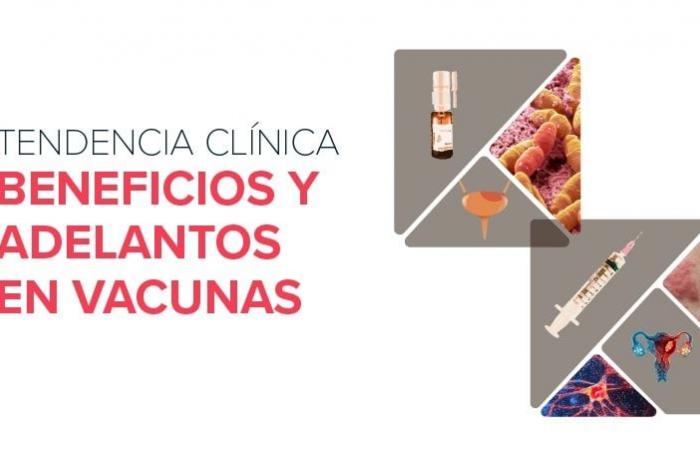We weekly identify a term of clinical interest, we analyze its current relevance and present an infographic that applies to its clinical practice.
Since 2012 the World Health Organization (WHO) celebrates between April 24 and 30 World Immunization Week.[1] According to this identity, in the last five decades vaccines have avoided the death of at least 154 million people, which means that every minute six lives have been saved. The benefits have been seen for both children and adults and the goal is to eliminate diseases that can be prevented by vaccination.
Each year different vaccines are announced that provide benefits both in protection against infections and in the treatment of pathologies beyond these. Some advances include vaccines against urinary tract infections, human papillomavirus (for the prevention of cancers associated with exposure to virus) and Herpes Zóster, which recently made it known entails a reduction in the risk of dementia and even vaccine benefits that could prevent cardiovascular diseases.
An observational multicenter study carried out in Spain showed that in patients with recurring urinary infection who received a sublingual antibacterial vaccine, stimulating of the immune system by exposure to inactivated antigens of common uropatogens, the average urinary tract infections in the 3 months after the completion of the prophylaxis was considerably less resorts after one year. This was reflected in reducing emergencies and primary care, less need to consult with the urologist and decrease in the use of diagnostic tests, such as urine crops and ultrasound. The results support the use of immunoprophylaxis as an innovative strategy in the treatment of recurrent urinary infections.
Prophylactic vaccination against human papillomavirus has proven significantly to reduce the incidence of invasive cancers and their precursors, which is why WHO recommends including it in national vaccination programs, with 90 % coverage in girls before 15 years by 2030. Although the greatest efficiency is achieved in early stages of life, vaccination is advised in women with women Gynecological related to human papillomavirus either at the time of diagnosis or after treatment.
-Another vaccine with positive results include those in which the clinical records of the elderly were analyzed where Stanford University researchers found that those who received the vivid vaccine attenuated or weakened against the Herpes Zóster (Setupax) They had 20 % less risk of developing dementia in the years after vaccination. The benefits were more evident in women than in men. Although the mechanisms through which this vaccine could protect against dementia are not yet known, theories that suggest that it could stimulate the immune system in general or reduce the reactivations of the virus. This finding supports the hypothesis of a relationship between exposure to certain viruses and central nervous system conditions, so they continue to study the benefits of this and a new recombinant vaccine of subunits (Shingrix) In the prevention of dementia.
Other studies have shown that vaccines against COVID-19 and influenza can reduce cardiovascular risk. An example of this is the Fluvacs study, which indicated that flu vaccination could reduce the risk of mortality and ischemic events in people who have had an acute myocardial infarction or that they recover from an angioplasty, especially during the influenza season, considering an effect of the vaccine on the humoral immune response that would provide benefits at the time of the year with greater circulation of the flu virus.[2]
A Danish study showed that patients with respiratory syncitial virus infection have a high risk of cardiovascular and cerebrovascular disease and, therefore, recommend vaccination patterns against this type of virus, especially in patients who have comorbidities.
The work of the primary care doctor should focus on properly identifying each patient’s profile to determine what vaccines are necessary, carefully valuing the benefits and risks. Also, promote vaccination in the population for disease prevention.
For more information about vaccination, read here.






